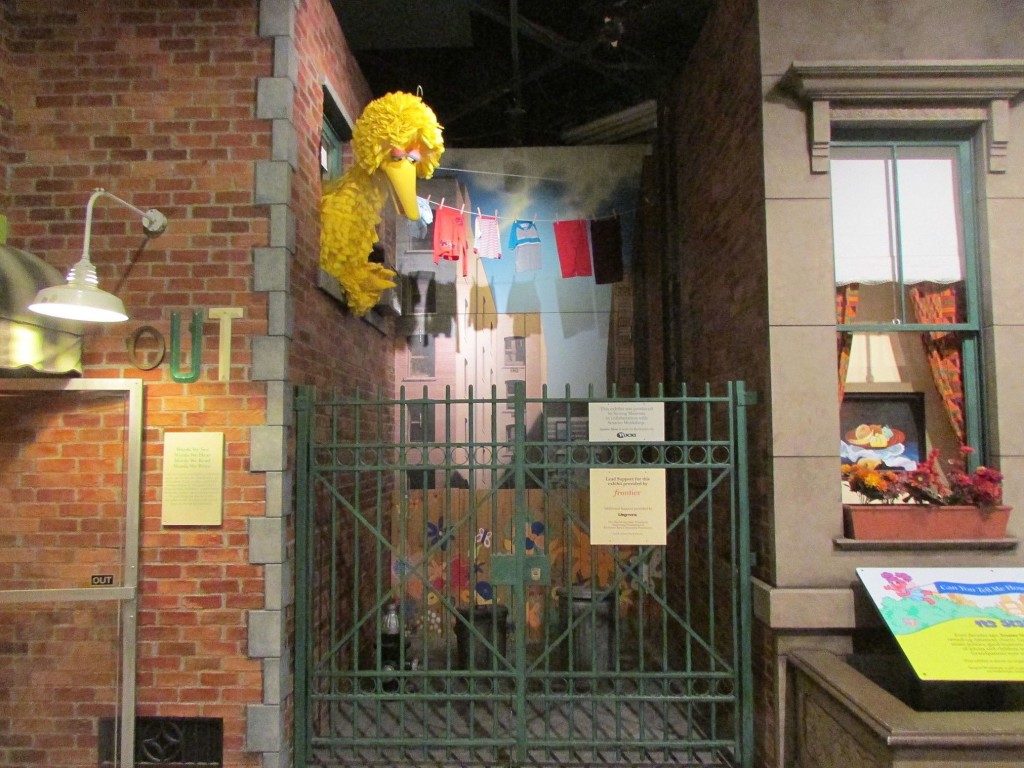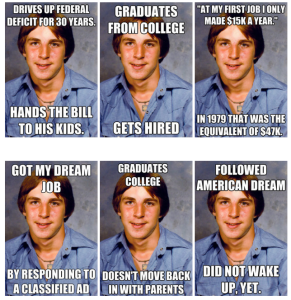
By עדירל/Wikimedia Commons
On August 13, 2015, PBS announced that Sesame Street, a program originally designed to educate economically disenfranchised youth, was moving to HBO, a paid premium cable channel. Children whose parents could afford HBO would be treated to new episodes of the 45-year-old series. Children whose parents could not afford HBO would get the new episodes nine months later while making do with re-edited repeats on PBS. The symbolism of the move is clear: a show long dedicated to serving America’s poorest children is now programming for the privileged.
Proponents of the move argued that it did not make a difference: most people watch television through the Internet anyway. In this case, “most people” are the “most advantaged” people, the opposite of the audience Sesame Street traditionally sought.
Today 30 percent of Americans have no broadband internet and 16 percent have no Internet at all. Thirty-seven percent of Americans without a high school diploma remain unconnected. At my daughter’s St. Louis-area public school, where most children receive free lunch, announcements are distributed only on paper because so many families lack internet access. These kids are not exceptional, just invisible. They are the subset of America Sesame Street was designed to serve — the children eternally left behind.
In America, education has become a prize for people who have already won. Those with money, connections, and access to technology travel a path that starts with private preschools, continues through SAT tutors and exorbitant enrichment activities, and culminates in college that costs more than the national median income. Washington University in St. Louis, for example, charges $63,373 in tuition, room and board, with tuition alone costing $47,300. (The next step for the children of the educated class is an unpaid internship or expensive and required graduate school degree, a grown-up sequel to the pay-to-play childhood.) By contrast, most American families struggle with a lack of early childcare options, subpar and underfunded public schools, after school jobs for teenagers meant to pay household bills, and massive university debt. There are two tiers and the divide begins not with the child’s ability, but with his or her parents’ income.
The gulf separating the current generation of younger adults – born in the 1970s or later – and their baby boomer predecessors is well documented. Memes of “Old Economy Steve” describe a baby boomer dreamland of $400 college tuitions, minimum wage jobs that paid enough to buy a house, and minimal student loan debt. This is the long-gone fantasy that David Brooks and other baby boomer pundits espousing the virtues of American meritocracy inhabited as youth. This was an era when it made little difference where you came from because access to cheap and good education made it easier to get where you were going – whether to get an affordable college education or a well-paying job that did not require one. The fate of the next generation, however, relies on how heavily parents are able to invest in the expensive credentials now required to purchase a professional future.
Their offspring are the first generation of Americans to be born into an entrenched meritocracy, one structured on what sociologist Pierre Bourdieu called “the social alchemy that turns class privilege into merit.” In an entrenched meritocracy, advantages conferred by birth are marketed as achievements, but these achievements – a good education, a prestigious-but-unpaid or low-paying entry-level job – are only possible for those who have the means to afford them. The cycle repeats itself, with a wealthy and educated elite conferring their own advantages onto their children.
There is no room, in this scenario, for those who cannot pay the price to educational entry. Broadly speaking, there is no room, period. Opportunity hoarding has become the pastime of the elite, with education used as a proxy for rejection based on “merit,” and “merit” redefined as how many prestigious accolades one is able to purchase to gain access to education. This process begins at birth, where quality of school is determined by parental income bracket, but is shown most clearly in higher education, where the cost of tuition increased 1120 percent between 1982 and 2012.
High tuition deters the lower classes from attending university and consolidates opportunities for the rich. Ivy League universities are the most egregious example of this. Though some Ivy League schools like Harvard cover full tuition for students below a certain income bracket, they rarely accept students from that bracket. At typical Ivy League universities, roughly 50 percent of the entering class comes from families earning over $200,000 per year – the richest 4 percent of the country. State school tuition, once widely affordable for the middle class, has risen 29 percent since the 2008 recession. Since college is now a requirement to most entry-level jobs, students from poorer backgrounds take on massive debt to attend a prestigious school or risk being shut out of the white-collar economy.
In the past, the cost may have seemed worth it to families trying to secure a middle-class life, since college graduates earned more. In today’s economy, a college degree is is also a risk, a credential to hopefully prevent you from complete professional lock-out – although that is no guarantee. College has become more of a penalty than an opportunity.
In 2000, 33 percent of Americans self-identified as working and lower class. By 2015, that number had risen to 48 percent. As the number of lower-class Americans grows, wages continue to stagnate, meaning that today’s lower-class American has far less ability to take care of a family than one of generations before. Lower-class Americans increasingly can’t move out of their economic class as higher education – once vaunted as the ticket out of poverty – becomes prohibitively expensive, yet routinely required. Children cannot work their way to a more secure future, and the majority of parents cannot buy them one. Even upper-class families who can afford the pay-to-play system might discover that it yields little reward: according to the New York Federal Reserve, 44 percent of recent college graduates were underemployed in 2012, holding jobs normally held by high school graduates. Other college graduates work unpaid in prestigious professions like policy-making or journalism where “exposure” and “experience” have replaced a paycheck – leading them once again back to their parents’ purse-strings, which, if inadequate, lock the graduate out of his or her chosen field.
The good news is that this cannot go on forever. The bad news is why it will change. Entrenched meritocracy is, by definition, a one-generation phenomenon. The millennial children of the baby boomers are now adults with children of their own, struggling with how to pay for their children’s education, while dealing with their own massive college debt and limited employment opportunities. When economic mobility rests on access to education, and access to education runs on inherited wealth, what happens to the generation with no wealth to inherit? That is the uncertain future of today’s children, the ones whose parents are told to pay premium prices for educational programming like Sesame Street that was once free for all.
•
 Sarah Kendzior is a writer who lives in St. Louis. She writes for the Guardian, Politico, the Chronicle of Higher Education, and many other publications.
Sarah Kendzior is a writer who lives in St. Louis. She writes for the Guardian, Politico, the Chronicle of Higher Education, and many other publications.

